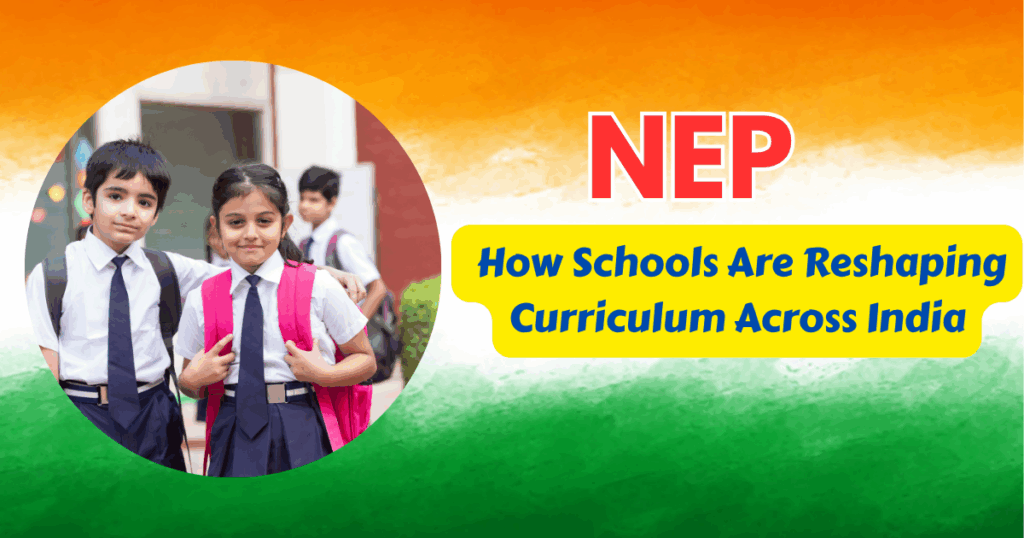NEP 2025: How Schools Are Reshaping Curriculum Across India The National Education Policy (NEP) 2020 is India’s first education policy of the 21st century. This replaced the National Policy on Education, which was released in 1986. The aim of this policy is to promote high-quality learning, creativity, and research. In this article we discussed the National Education Policy and covered how NEP is reshaping India’s education system.
NEP 2025
The National Education Policy (NEP) 2020 was introduced as a transformative vision for India’s education system. The policy aims to address deep-rooted challenges while laying the groundwork for a globally competitive, inclusive, and future-ready framework.

Now that five years have passed since its launch, we are at the halfway point. This is a good time to reflect on how far we have come and the progress made since the policy was first released and look at expectations from NEP 2025.
Key Expectation from NEP 2025
- To achieve the intended outcomes after the dismissal of the no detention policy, expectations from NEP 2025 Is to emphasize the integration of personalized and adaptive learning (PAL) solutions in school.
- NEP 2025 is also expected to bring a structured and detailed update to the ICT Scheme under Samagra Shiksha.
- While recent changes in senior secondary education have strengthened regional language content, it is essential for NEP 2025 to mandate region-specific digital content across all school levels.
How Schools Are Reshaping Curriculum Across India:
The policy introduces a new curricular and pedagogical structure. Children will spend five years in the foundational stage, three years in the preparatory stage, three years in the middle stage, and four years in the secondary stage. This is aligned with a child’s cognitive development stages. And the policy also has direct mentions of the Right to Education Act, 2009, though not repealed.
India’s Education Revolution: The role of NEP 2020
This policy is reforming the Indian education system from school to college level. Through this policy, the government is taking the pitfalls of the previous policies and bringing uniformity.
1. Laying the Foundation
The NEP fosters a conducive environment for learning from early childhood. This policy has laid a strong foundation for the early childhood education systems. According to the policy, 85% of a child’s brain develops before age 6.
2. Shift from Teacher-Centric to Learner-Centric Education
The government aims to reshape India’s education system. The purpose is to nurture creatively charged individuals. The ideology behind this reform is to promote holistic development. This policy allows students to choose from a variety of disciplines across streams. Unlike before, there are fewer distinctions among the streams.
3. Empowering students through diversity in learning
Studying could be more flexible, learner-centric, and enjoyable. This is a big shift from textbook- and teacher-centric learning. The new education policy would make learning more accessible and personalized. It also encourages the choice of subjects over conventional streams such as science, commerce, and arts.
4. Promoting experiential education
The NEP has also highlighted the need for teacher training and pedagogy to tackle the conventional form of education from the core.
5. Encouraging lifelong learning
NEP also promotes education that continues even after graduation. After all, education is not a destination but a lifelong Finally, it teaches them to be flexible towards changes and be open to adapting to them.
6. Online Learning
The global pandemic in 2020 brought a shift from offline teaching to online. This made online education the next best alternative to offline learning and education.
7. Choice Based Credit System (CBCS)
A student can select a course from a list of core electives and soft skill courses. Instead of a percentage, the CBCS applies a grading system.
Shaping Tomorrow: challenges and Road Ahead
- Policy application: However good a policy is, the real goal is the efforts put in by states to align with it.
- Digital Divide: Lack of access to the internet and technology to experience online learning.
- Lack of infrastructure: These policies are more feasible for urban schools. Before equality, it is important to target equity by addressing the disparity.
- Shortage of trained teachers: The most important aspect is the lack of adequately trained teachers.
Conclusion
In this article we discussed the NEP 2025: How Schools Are Reshaping Curriculum Across India: The National Education Policy (NEP) 2020 is India’s first education policy of the 21st century. The policy introduces a new curricular and pedagogical structure.

Mark Delyn focuses on education, learning methods, and academic trends. Her work supports students, educators, and lifelong learners with practical and timely insights.







